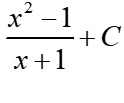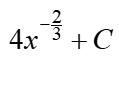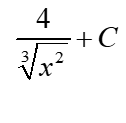When checking the results of your calculations in indefinite integrals against answers in tasks, for example at the end of a textbook, you often reach a frustrating point where it just “turns out differently” and you can’t understand why.
Where do the differences come from?
It’s important to be aware that both answers might be correct, meaning both yours and the one from the textbook. First off, the same expression can be written in different ways, for example:

which simplifies to:
![]()
And for instance,  is the same as:
is the same as: 
What might be more interesting, however, is that the results can differ by a constant and there’s no issue with that because an indefinite integral, by definition, is a family of functions differing by a constant.
So:
![]()
belongs to the same family of functions as:
![]()
because they differ only by a constant (-1). Both results are correct.
To the same family of functions would also belong:
![]()
because ![]() is a constant just like 2 or 3.
is a constant just like 2 or 3.


